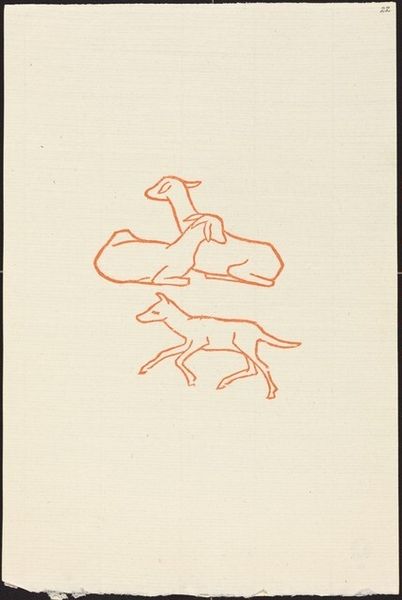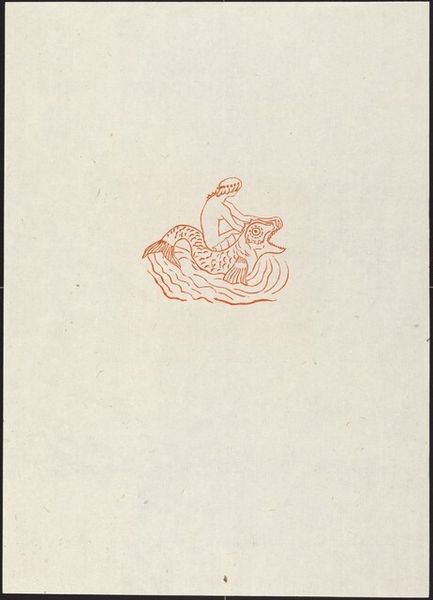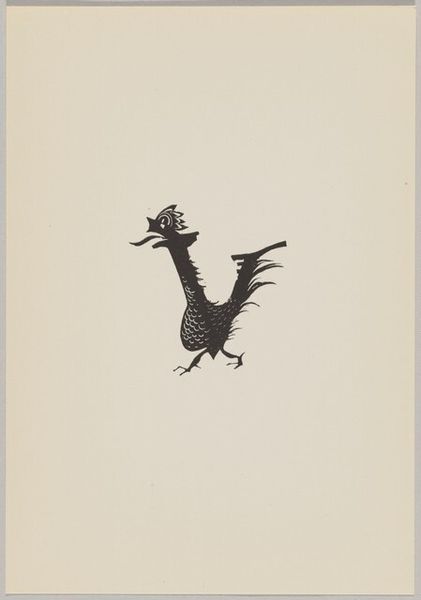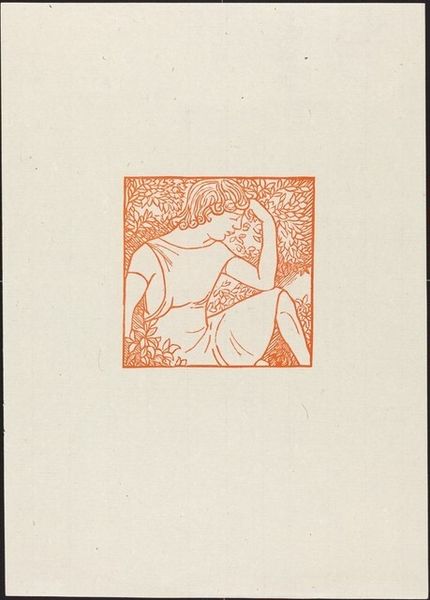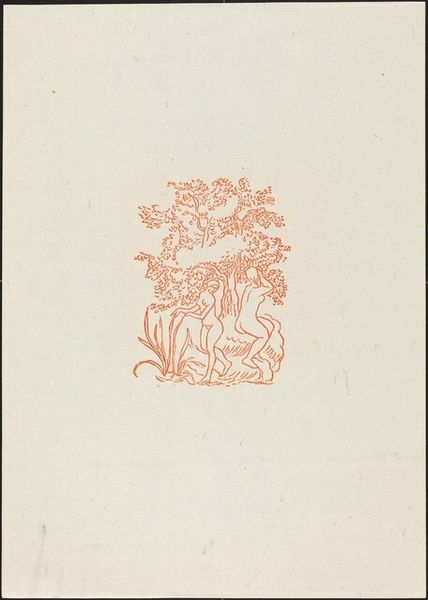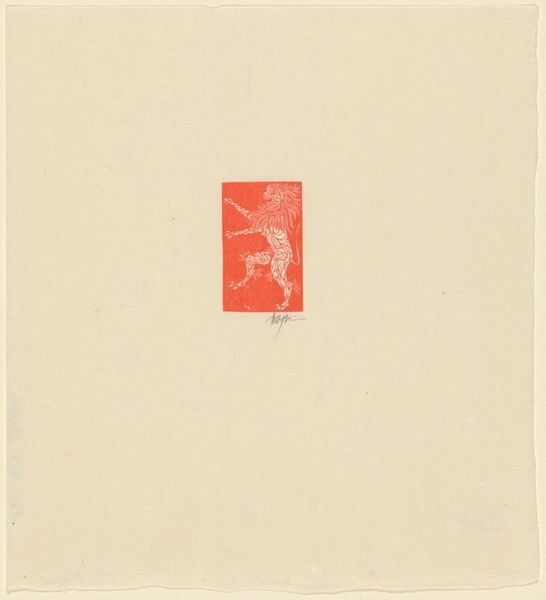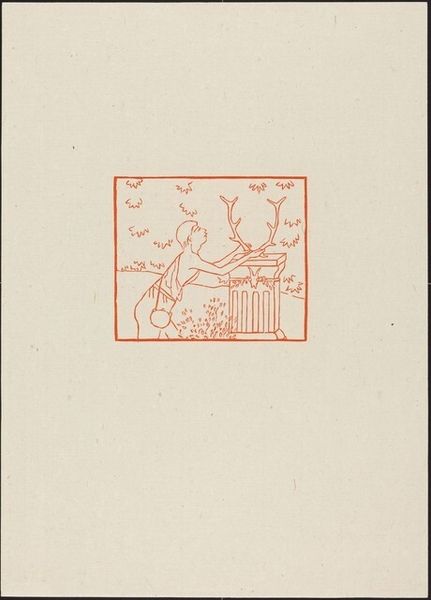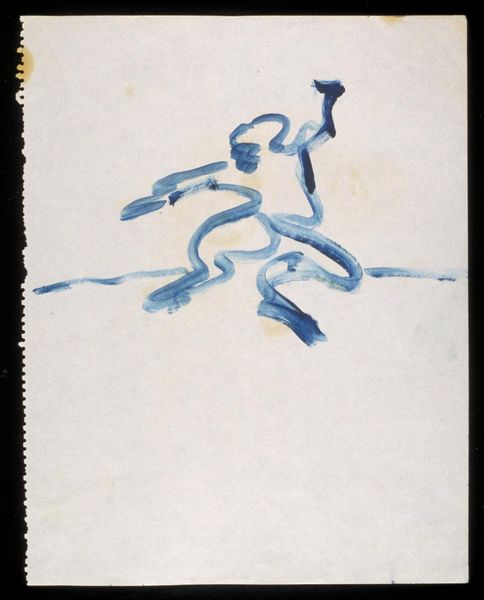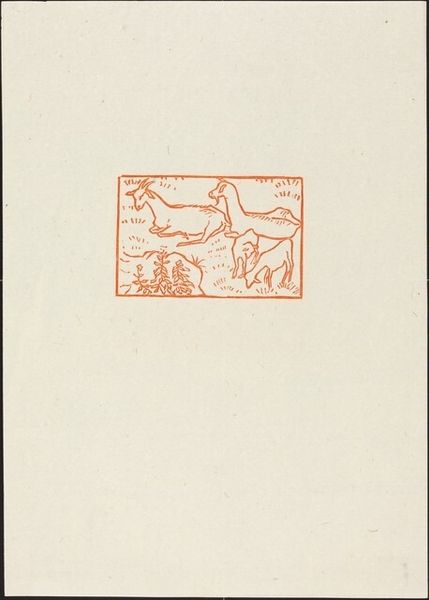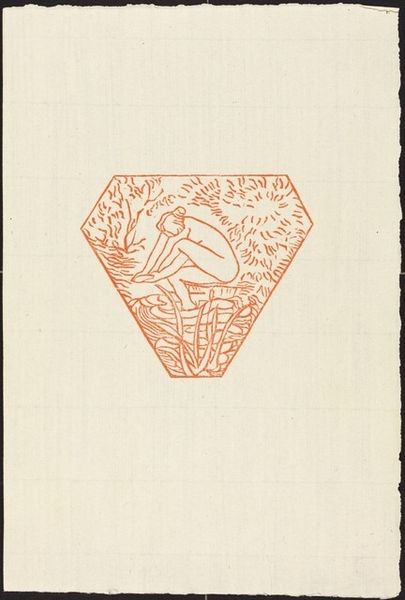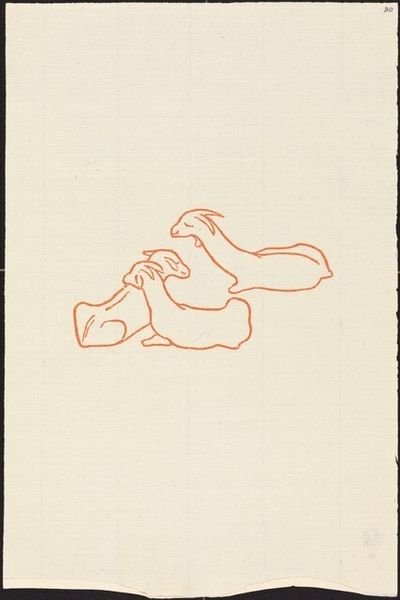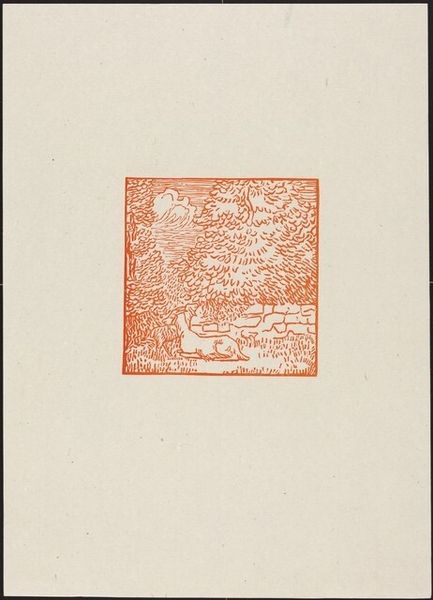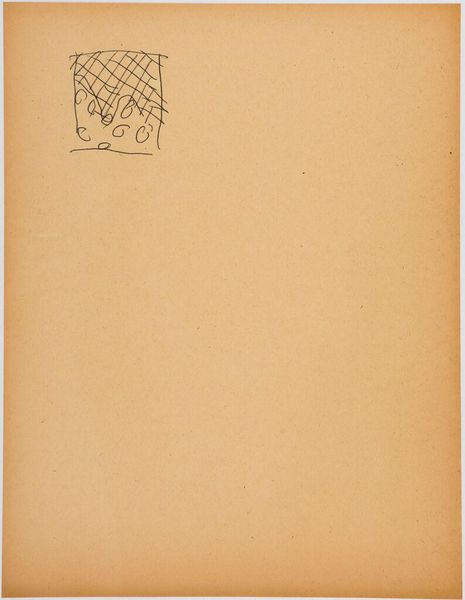
Second Eclogue: A Young Goat (Fin de la deuxieme eglogue) Possibly 1926
0:00
0:00
drawing, graphic-art, print, paper
#
drawing
#
graphic-art
# print
#
paper
Copyright: National Gallery of Art: CC0 1.0
Editor: Here we have "Second Eclogue: A Young Goat," a print possibly from 1926 by Aristide Maillol. It’s deceptively simple, just an orange goat on paper, but there's a tactile quality in the impression that I find captivating. What do you make of this piece? Curator: Considering this from a materialist lens, I am interested in the physical labor involved in producing such an image. Think about the carving of the woodblock, the specific paper chosen, the type of ink, and how each informs our understanding of the work. Does the print’s simplicity belie the complexity of its creation? Editor: That's a great point. You're making me think about the artist’s process, the physicality of printmaking, instead of focusing solely on the image. Curator: Exactly. The scale, the repetition possible with prints—how do these choices relate to the wider availability of art and knowledge in the 1920s? Was Maillol engaging with a new audience, or was he reinterpreting traditional art for an exclusive group? The orange ink, for instance; was it cheap or rare at the time, and how does its potential accessibility influence our appreciation? Editor: I never considered the socio-economic implications of the materials used! I'm now wondering if this seemingly simple print comments on consumerism. Curator: Precisely. How can we understand mass production techniques through something so deliberately small-scale? Perhaps thinking about the function of each component, from paper to image, lets us reconsider who or what defined ‘art’ during this period. Editor: This really shifts my perspective. It's less about what the goat symbolizes and more about the statement made by choosing these specific materials and techniques at that moment in history. Thank you! Curator: My pleasure! Approaching art this way, everything from the choice of material to its availability tells a story far beyond the depicted image itself.
Comments
No comments
Be the first to comment and join the conversation on the ultimate creative platform.
